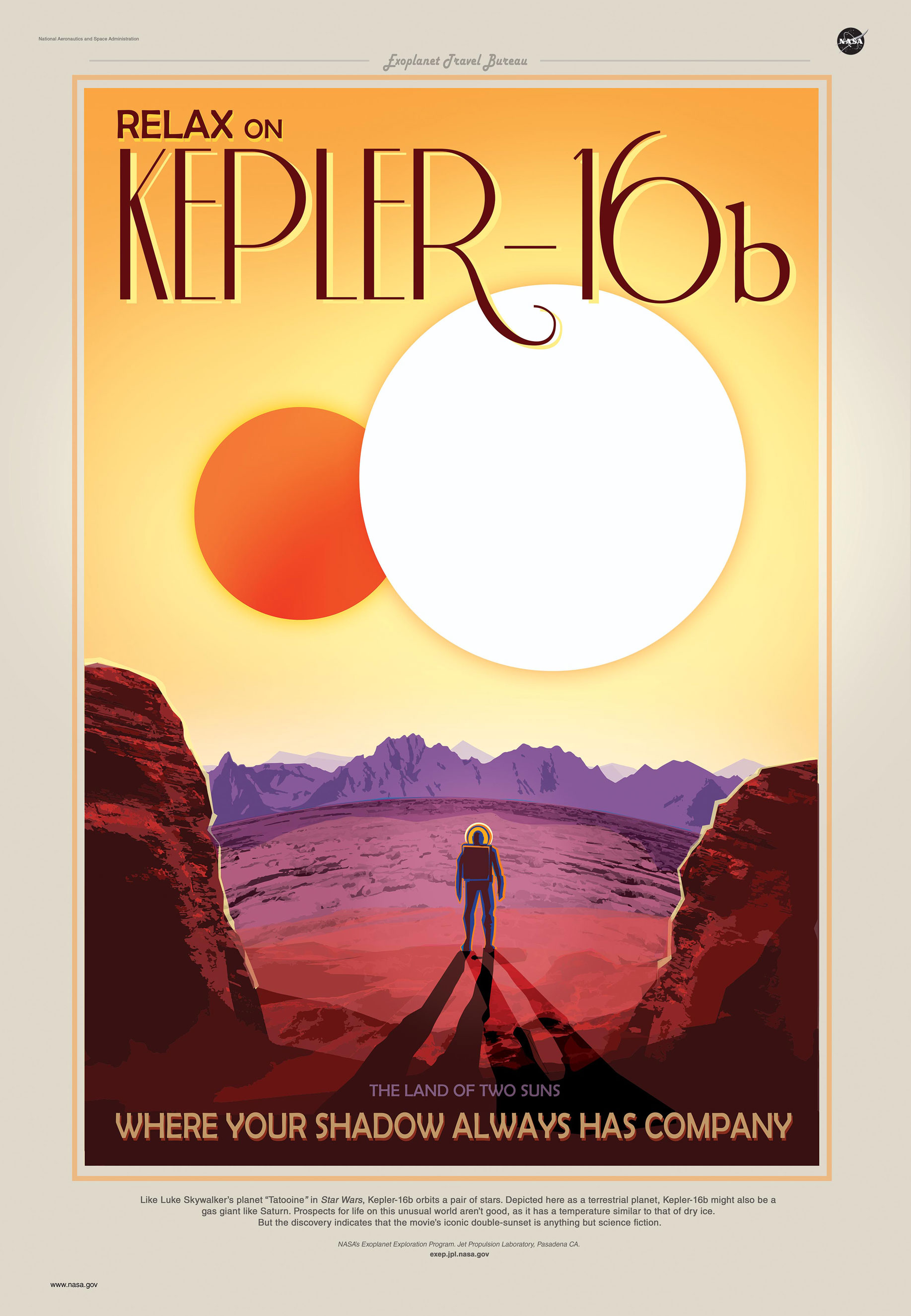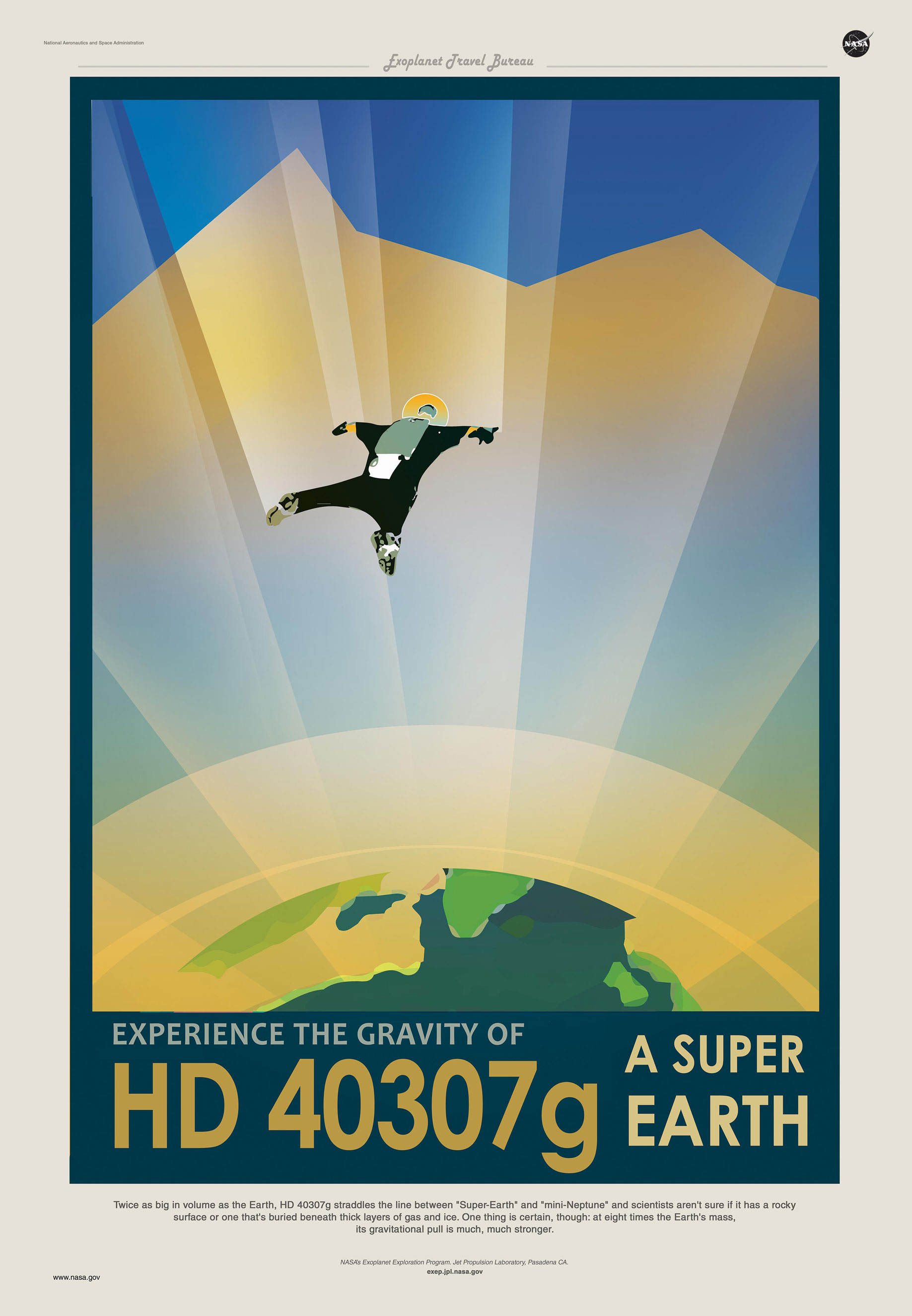
Planet-hunters haven’t found a Mirror Earth orbiting a star beyond the Sun yet, but this week’s discovery of a new batch of exoplanets that come awfully close, plus the announcement that the amazing Kepler probe has topped the 1,000 mark in its search for alien worlds makes it only a matter of time before we find planets where life might be thriving.
Once that happens, of course we’re going to want to go visit.. That’s not going to happen tomorrow: it’s impossible to visit any of these worlds in person with any current technology, so until we build a Star Trek-style warp drive or discover an Interstellar-esque worm hole, a trip to an exoplanet will have to remain a dream.
Fortunately, though, NASA’s Jet Propulsion Laboratory, in Pasadena, has some professional dreamers on staff—artists who try to capture the excitement of space exploration in a way the rest of us can appreciate. Their latest creation: three fanciful posters advertising tourism to three actual exoplanets, done in the gorgeously romantic style of 1930’s-era railway posters.
This being a NASA lab, they didn’t just make stuff up. “There was a lot of back-and-forth with the scientists,” says David Delgado, one of the designers, “figuring out which exoplanets to choose, then noodling on what it would actually like to visit them.” In the case of Kepler 186f, for example, which was discovered last year, the planet orbits a small red star. “Maybe the color of vegetation would be different there,” he says—and on the poster, it is. The second poster shows Kepler 16b, a planet that orbits twin suns. The third depicts HD 40307g, a so-called Super Earth about 1.4 times the size of our home planet and eight times as massive. All three could in principle be habitable, based on how much heat they get from their stars.
“The posters were really designed primarily for use within JPL,” says Joby Harris, another designer on the project. When they were released to the public a few days ago, however, the response was overwhelmingly positive. “We were a little surprised by it,” admits Harris.
He shouldn’t be. One of the reasons JPL has these artists on staff, says Delgado, “is to get people excited about space science, to build their curiosity.” They’re clearly exceptionally good at doing their jobs.
Three more exoplanet posters are in the works, although there’s no word on when they’ll be finished. For those who want to print out their own posters, high-resolution print-optimized versions are on JPL’s Planet Quest website.



More Must-Reads from TIME
- Donald Trump Is TIME's 2024 Person of the Year
- Why We Chose Trump as Person of the Year
- Is Intermittent Fasting Good or Bad for You?
- The 100 Must-Read Books of 2024
- The 20 Best Christmas TV Episodes
- Column: If Optimism Feels Ridiculous Now, Try Hope
- The Future of Climate Action Is Trade Policy
- Merle Bombardieri Is Helping People Make the Baby Decision
Contact us at letters@time.com